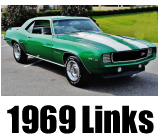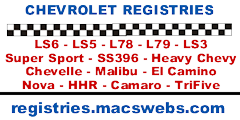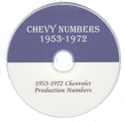 1967 Index |
 1968 Index |
 1969 Index |
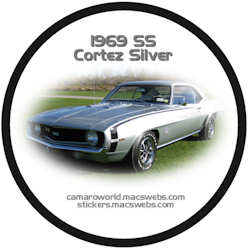  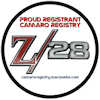 Stickers Registry Registry |
1969 Camaro |
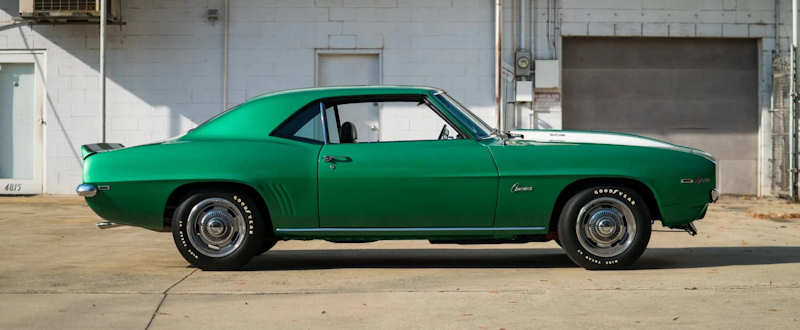
The 1969 Camaro was the highest volume first generation Camaro, selling 243,085 units in a long model run that extended from September 26, 1968, through the end of November, 1969. The 1970 model Camaro wasn't introduced until February 26, 1970. This production total wasn't exceeded until 1978. The 1969 Camaro was the only model year to have headlight washers. The system was operated by vacuum much like windshield washers. The headlight washers were included with all Rally Sports and could be purchased separately as RPO-CE1.
The 427-cid engine never appeared on 1969 dealer order sheets, but some were specially ordered by dealers. These were legitimate factory built vehicles. These 427-cid Camaros are known as COPO cars, the letters signifying Central Office Production Order. COPO #9560 Camaros included an aluminum block "ZL1" 427-cid engine. Sixty-nine of these Camaros were built, fifty for Chevrolet dealer-racer Fred Gibb and nineteen for other dealers. Although Chevrolet had toyed with the idea of a special graphics package for ZL1 Camaros (and actually built two for its own use), the ZL1 Camaros released to the public carried no special exterior identification. The option cost was $4,160, more than the cost of the base Camaro itself at $2,727 for the coupe. A second category of COPO 1969 Camaro was COPO #9561. These had iron-block 427-cid engines. Chevrolet dealer-racer Don Yenko received 201 (or 199, depending on the source) of these Camaros and sold some of them through his dealership with special Yenko graphics. Most of the Yenko Super Camaros were sold through Yenko's distributorship, SPAN, Inc. Additional iron-block 427-cid Camaros were factory-built under COPO #9561. A total of 69 #9561 COPOs with the ZL-1 were ordered and 201 #9560 with the iron block L72.
Additionally, dealer and owner installations of 427-cid motors into 1969 Camaros were common. Four-wheel disc brakes adapted from the Corvette became a legitimate factory option in 1969. It is a misconception that these were factory options only with Z28 and SS models. You could purchase RPO JL8 for any Camaro, but it cost more if it wasn't a Z/28 or SS - $623.50 instead of $500.30. The design of these brakes was completely different from the front disc rear drum option for 1969. The disc/drum combination used a new single piston, floating caliper design. The Corvette style was non-floating with four pistons per wheel.
The 1969 Camaro was the first to offer two-tone paint. Factory-applied stripes on 1969 Camaros with rear spoilers did not cover the small portion of trunk exposed between the spoiler and the taillight panel. Dealers and owners often painted the trunk lip. The Camaro was the pace car for the Indianapolis 500 auto race in 1969. Chevrolet sold 3,675 replicas of the pace car under Regular Production Option Z11. These were SS Rally Sport convertibles with code 911 Dover White exteriors, orange Houndstooth cloth seats, custom interiors, orange striping, white body sills and rear panels, Rally Wheels, bright exhaust tips, and cowl induction hoods. Other options weren't mandatory, but to match the actual pace car, the following RPO's had to be ordered: A01, A39, A85, C06, D55, D80, G80, M40, N34, N40, U17, and U63. There were also a limited number of Pace Car hardtops produced under RPO Z10.
According to Vintage Vehicle Services records 6,067 1969 Camaros were imported for sale into Canada; no further breakdown of options on these Camaros.
© CamaroWorld
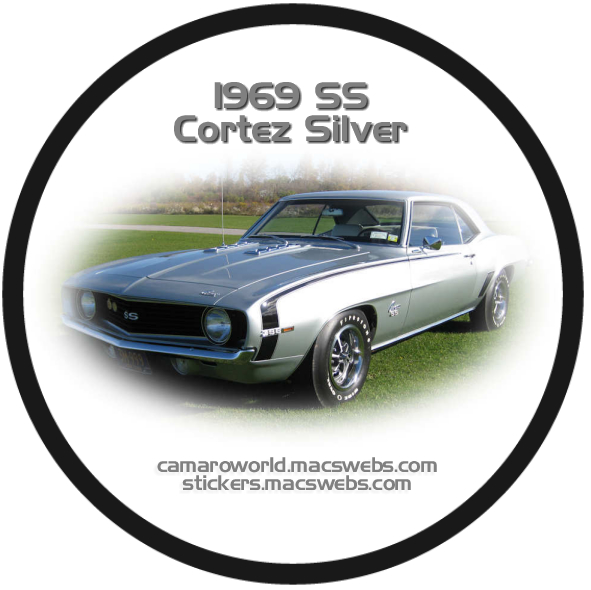


Custom stickers (3 sizes available) and custom calendars (various layouts) can
be found at my Stickers
& Calendars website.
 1967
1967 1968
1968 1969
1969 1967
1967 1968
1968 1969
1969